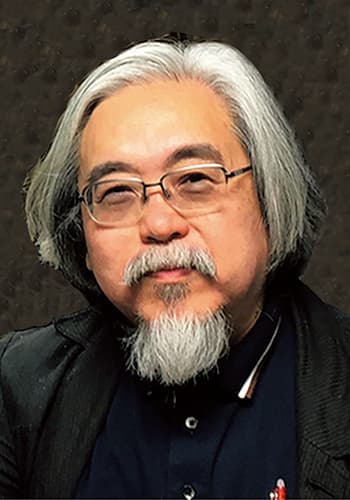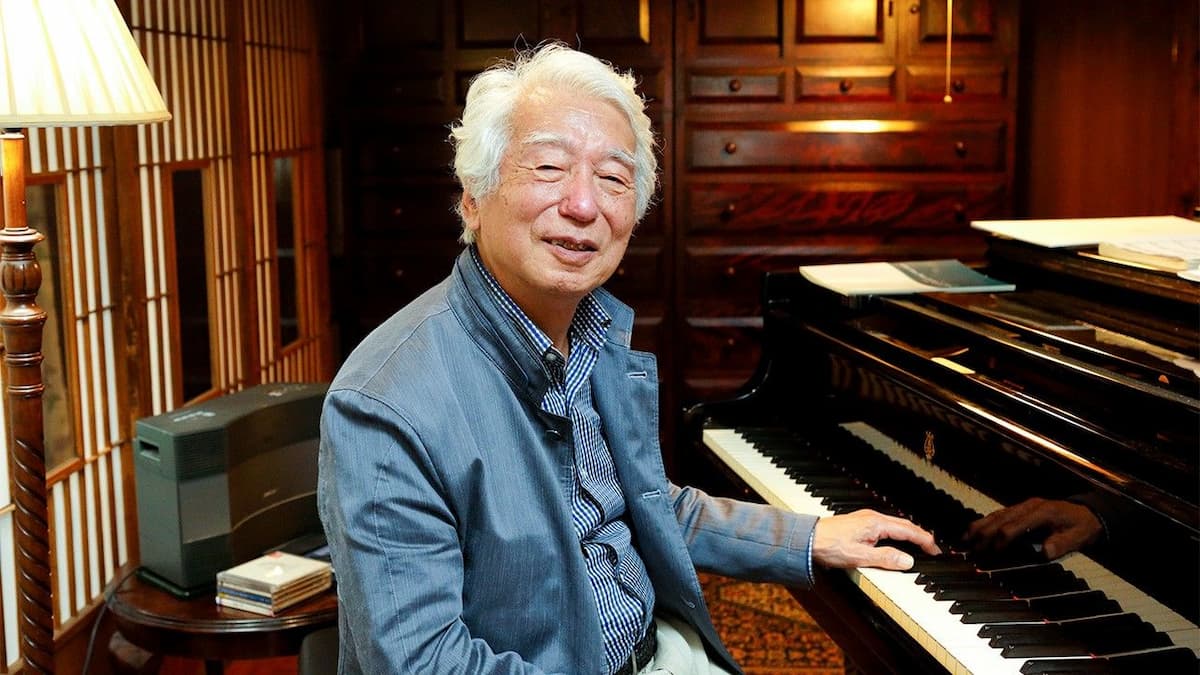The Japanese classical composer Takashi Yoshimatsu, internationally known for composing the 2003 remake of “Astro Boy,” was devastated when his close friend, the pianist Izumi Tateno collapsed on stage after playing the last note of a performance in Finland. Tateno was 65 years of age and had suffered a cerebral hemorrhage. He did survive the stroke, but even after many months of rehabilitation, could never regain the use of his right hand. Tateno became part of an extensive list of pianists who, by circumstance or misadventure, performed exclusively with their left hands.

Takashi Yoshimatsu
Paul Wittgenstein lost his right arm in WWII, and Nicholas McCarthy, born without a right hand, became the first left-hand-only pianist to graduate from the Royal College of Music in London. Gary Graffman, like his colleague Leon Fleisher, suffered from a neurological disorder called focal dystonia that causes loss of function and uncontrollable curling in the fingers. Countless composers have been commissioned or have dedicated works especially tailored for left-hand pianist. Yoshimatsu explains, “I want to dedicate a series of pieces to Mr. Tateno who has become a left hand pianist, wishing that someday he will be able to play it with both hands. So I should call it piano music that can be played with either the left hand or both hands.”
Especially composed for Tateno, “these pieces can also inspire the strength to overcome obstacles. Through the music, I want the audience to hear this powerful message of hope, and to encourage those who are injured to find a way forward. Every time I perform these pieces, I find the great potential for music to reach a person’s soul.”
Takashi Yoshimatsu: Gauche Dances, Op. 96 (Yumiko Oshima-Ryan, piano)

Izumi Tateno
Composed in 2006, Yoshimatsu described his Gauche Dances as “a work filled with pop and rhythmical idioms. The work consists of four styles of music. Rock creates heavy and low beats. Blues sounds like luscious jazz music. Tango is the musical style, which Mr. Tateno is privately found of. Boogie Woogie brings frenzied rhythms of joy. Anything can happen in these hot dances!” With his solo piano works, Yoshimatsu squarely places himself at the head of the most recent musical trends in Japan. He embraced the revival of lyricism using tonal melody and harmony, and completely rejected the atonal music that dominated mainstream modern Japanese composition throughout the 1970s. Yoshimatsu calls atonal music “unmusical,” and his works frequently project triadic simplicity, repeated progression, and extended tertian harmonies. Determined that “anything and everything is possible in music,” Yoshimatsu’s approach also breaks the boundaries of traditional Japanese music, expanding it to include the “notion that J-Pop is not just pop music but a wide range of styles and influences.” As such, he is composing in a free neo-romantic style with strong influences from jazz, rock and pop. In his visions from the Finnish city Tapiola, Yoshimatsu initially offers a “Vignette in Twilight” referencing Tapio, a Finnish forest spirit in Finnish mythology. “Gigue of Forest” is woven from “musical twigs and leaves,” and the “Pavane for Water” is a “song of praise of the current swaying through the middle of the piece.” The short interlude “Commas of Bird,” presents “fragments of songs like commas by unseen birds,” and the “Toccata in the Wind” depicts the “wild wind blowing through the forest freely.”
Takashi Yoshimatsu: Tapiola Visions, Op. 92 (Yumiko Oshima-Ryan, piano)

Tapiola Garden City
Yoshimatsu was born in Tokyo and initially studied in the engineering department of Keio University. Essentially self-taught as a composer, he later studied under Teizo Matsumura and was introduced to Manabu Kawai at Tokyo University of the Arts. Yoshimatsu took a couple of lessons in harmony and counterpoint, but quickly terminated his studies and focused on the process of composition. He became fascinated by progressive rock music such as Pink Floyd, Yes, Emerson, Lake & Palmer, and even joined rock and jazz bands as a keyboard player. As such, it is hardly surprising that his compositions often include and combine elements of jazz, classical, folk and world music with rock formats. In 1998, Yoshimatsu was appointed “Composer-in-Residence” of Chandos Records, and besides composing and recording he spends his time writing articles, music essays and has published a good many books.

Ainola
As a self-confessed “new lyricist” Yoshimatsu airbrushes a seductive array of sounds within an insistently simply harmonic cloth. His “Ainola Lyrical Ballads” pay homage to the villa of Jean Sibelius, named after his wife Aino. Yoshimatsu writes, “I composed these little ballads inspired by the scenery of Ainola. The pieces are like seven small bouquets dedicated to Sibelius and a revered pianist, Izumi Tateno. The motifs of this work came from images such as gentle piano sounds melting in the air, beautiful flowers in the garden, the forest around the house and a distant view of the lake, faint echoes of Sibelius’s symphonic poem The Swan of Tuonela, and the distant ring of the church bells which sounds like a blessing on every new life.”
For more of the best in classical music, sign up for our E-Newsletter
Takashi Yoshimatsu: Ainola Lyrical Ballads, Op. 95 (Yumiko Oshima-Ryan, piano)




